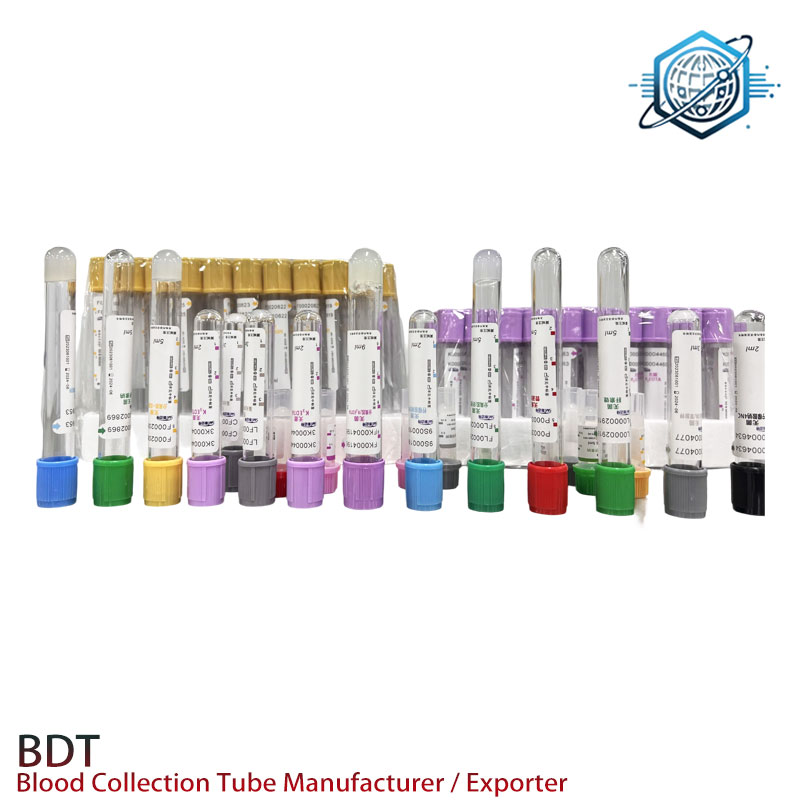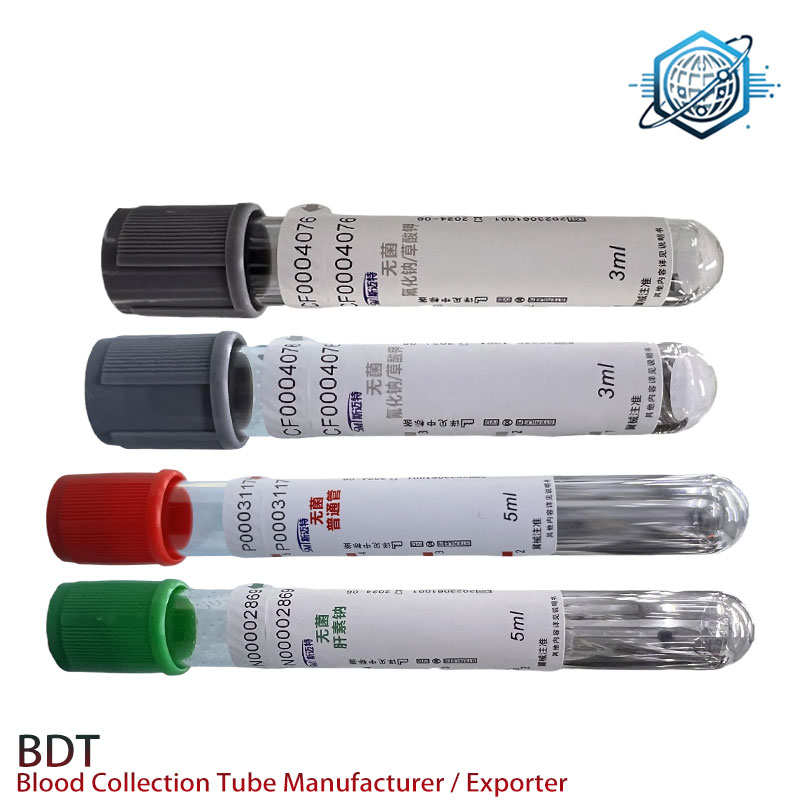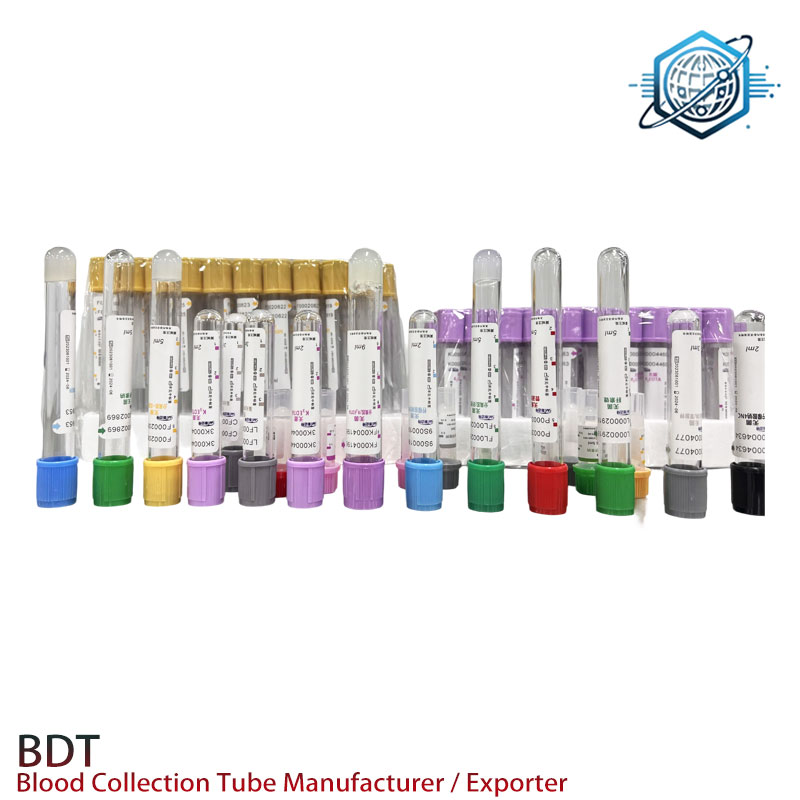aug. . 14, 2025 03:40 Back to list
Precision Blood Collection: Sodium Fluoride & Potassium Oxalate Tubes
Understanding the Critical Role of Sodium Fluoride and Potassium Oxalate Tubes in Clinical Diagnostics
In the intricate world of clinical diagnostics, the integrity of a blood sample is paramount for accurate test results. Among the myriad of blood collection tubes, the sodium fluoride and potassium oxalate tube stands out as an indispensable tool, particularly for glucose and lactate measurements. These specialized tubes are engineered to prevent glycolysis – the metabolic breakdown of glucose – ensuring that the blood glucose levels remain stable from the moment of collection until laboratory analysis. Our Sodium Fluoride-Potassium Oxalate Tube is designed to meet the rigorous demands of modern diagnostics, providing unparalleled sample stability and reliability. This comprehensive guide delves into the technology, applications, and advantages of this critical diagnostic component.
The precision in medical diagnostics is increasingly dependent on the quality of pre-analytical sample handling. As healthcare systems evolve, there's a heightened demand for solutions that offer extended sample stability and simplified logistics. Tubes containing sodium fluoride potassium oxalate play a pivotal role in this landscape by enabling accurate glucose measurements even after several hours post-collection, which is crucial for remote clinics or samples requiring transport. This trend towards enhanced sample integrity and streamlined workflows underscores the growing significance of expertly manufactured collection tubes in maintaining diagnostic accuracy across various healthcare settings.
The Synergistic Mechanism: Sodium Fluoride and Potassium Oxalate
The efficacy of the sodium fluoride potassium oxalate tube lies in the synergistic action of its two primary additives: sodium fluoride and potassium oxalate. Sodium fluoride acts primarily as an anti-glycolytic agent. Once added to the blood sample, it inhibits specific enzyme systems, such as enolase, which are crucial for the glycolytic pathway. This inhibition effectively halts the consumption of glucose by red blood cells and other cellular components, thereby preserving the original glucose concentration for up to 24 hours at room temperature, a critical factor for accurate diabetes diagnosis and management. This mechanism ensures that the measured glucose level truly reflects the patient's physiological state at the time of venipuncture, preventing artificially lowered results due to delayed processing.
Potassium oxalate, on the other hand, functions as an anticoagulant. Its role is to prevent blood clotting by binding to calcium ions, which are essential cofactors in the coagulation cascade. By removing calcium from the blood, potassium oxalate ensures that the blood remains in a liquid state, allowing for proper mixing with the sodium fluoride and facilitating accurate pipetting and analysis in the laboratory. This dual-action system provides a stable plasma or serum sample suitable not only for glucose but also for lactate and other metabolic tests. Understanding this precise chemical interaction is key to appreciating the superior performance of these tubes compared to alternatives like the potassium edta tube when glucose preservation is the priority.

Precision Manufacturing & Quality Assurance Process
The manufacturing of a high-quality sodium fluoride potassium oxalate tube is a highly controlled and precise process, crucial for ensuring the integrity and reliability of diagnostic samples. The journey begins with selecting premium-grade materials, typically medical-grade PET (polyethylene terephthalate) for the tube itself, known for its transparency, chemical inertness, and gas barrier properties, which are vital for maintaining the vacuum. The stoppers are made from medical-grade butyl rubber, ensuring a secure, leak-proof seal and excellent re-sealing capabilities after needle penetration. This material selection is foundational to the tube's long-term stability and performance, impacting its shelf life and the preservation of vacuum, which is critical for accurate blood drawing.
The core of the manufacturing process involves the precise dosing and coating of the sodium fluoride and potassium oxalate additives. This is achieved through advanced automated machinery that ensures a uniform and accurate concentration of reagents on the inner surface of each tube. Following additive application, the tubes undergo meticulous vacuum creation, where the exact negative pressure is established to ensure the correct draw volume for blood samples. Each batch is subjected to rigorous inspection standards, including ISO 13485 (Medical Devices Quality Management System), CE marking for European conformity, and often FDA compliance for market access in the United States. These certifications ensure that every tube meets strict global quality and safety benchmarks, offering users confidence in their diagnostic results. Our manufacturing facilities employ state-of-the-art automation and adhere to Good Manufacturing Practices (GMP) to deliver products with consistent quality and a typical shelf life of 18-24 months.

Key Technical Parameters & Product Specifications
Understanding the technical specifications of a sodium fluoride potassium oxalate tube is essential for laboratories to ensure compatibility with their analytical equipment and to maintain sample integrity. The design and formulation directly impact pre-analytical variables, which can significantly affect patient results. Below is a table outlining typical specifications for our Sodium Fluoride-Potassium Oxalate Tubes, highlighting the precision engineered into each product.
| Parameter | Specification | Significance |
|---|---|---|
| Tube Material | Medical-grade PET (Polyethylene Terephthalate) | Ensures vacuum stability and sample integrity; shatter-resistant. |
| Additive Concentrations | Sodium Fluoride: 2.5 mg/mL blood Potassium Oxalate: 2.0 mg/mL blood |
Optimal ratio for effective anti-glycolysis and anticoagulation without dilution effect. |
| Nominal Draw Volume | 2 mL - 10 mL (variable) | Precise vacuum ensures accurate blood volume collection. |
| Dimensions (Typical) | 13x75mm, 13x100mm, 16x100mm | Compatibility with standard lab centrifuges and automated analyzers. |
| Cap Color Code | Gray (ISO 6710 Standard) | Standardized identification for ease of use and reduced errors in labs. |
| Shelf Life | 18-24 Months from manufacturing date | Ensures long-term usability and reduces waste. |
| Sterilization | Non-sterile (unless specified for specific use) | Typically for diagnostic use where sterility of the inner tube is not critical for analysis. |
These parameters underline our commitment to delivering a product that ensures reliable sample handling and accurate diagnostic outcomes. The meticulous control over each specification guarantees that our sodium fluoride and potassium oxalate tube performs consistently, meeting the demanding requirements of clinical laboratories globally.
Application Scenarios & Technical Advantages
The primary application of the sodium fluoride potassium oxalate tube is in glucose testing, which includes fasting blood glucose, postprandial glucose, and oral glucose tolerance tests (OGTT). Its unique anti-glycolytic properties ensure that glucose levels remain stable for up to 24 hours at room temperature and even longer when refrigerated (up to 48 hours at 2-8°C), providing ample time for sample transportation and processing. This extended stability is a significant advantage, particularly for large reference laboratories or in scenarios where samples are collected in remote areas and need to be transported to a central testing facility. Without these tubes, glucose levels would rapidly decrease due to cellular metabolism, leading to falsely low results and potentially misdiagnoses, impacting patient care significantly.
Beyond glucose, these tubes are also critical for lactate measurements. Lactate levels are crucial indicators in conditions like sepsis, shock, and cardiac arrest, where rapid and accurate assessment is vital. Sodium fluoride's inhibitory effect on glycolysis is also beneficial here, preventing in vitro lactate production from glucose metabolism, thus preserving the true lactate concentration. The robust design and reliable vacuum draw of our sodium fluoride potassium oxalate tube ensure consistent sample volume and proper additive-to-blood ratio, which is fundamental for obtaining reproducible and accurate diagnostic data. This combination of anti-glycolytic and anticoagulant properties makes it superior to standard tubes for tests sensitive to glucose or lactate degradation, underlining its indispensable role in hospitals, clinics, and research institutions globally.

Choosing the Right Supplier: Manufacturer Comparison and Custom Solutions
When procuring sodium fluoride and potassium oxalate tubes, discerning buyers in the B2B sector must evaluate manufacturers based on several critical criteria beyond just price. Key differentiators include the consistency of vacuum draw, the precision of additive concentration, the quality of tube materials (ensuring no leakage or analyte contamination), and robust quality control systems. Leading manufacturers, like us, invest heavily in automated production lines and stringent quality checks to minimize batch-to-batch variation, a common pitfall with lesser suppliers. Our commitment extends to providing not just a product, but a reliable component of your diagnostic workflow, backed by continuous R&D and adherence to international standards like ISO 13485, ensuring superior performance compared to many industry alternatives.
Recognizing that different laboratories and research facilities have unique requirements, we offer comprehensive customized solutions for our Sodium Fluoride-Potassium Oxalate Tubes. This includes options for varying draw volumes, specific additive ratios, custom labeling for branding or specific assay needs, and packaging configurations. Our technical team works closely with clients to understand their precise needs, providing expert consultation from concept to delivery. This bespoke approach ensures that whether you require tubes for a large-scale clinical trial or a specialized research project, our solutions are perfectly aligned with your operational demands and regulatory compliance. Our extensive experience in the medical device industry, spanning over a decade, allows us to deliver high-quality, tailor-made products efficiently and reliably, solidifying our reputation as a trusted partner.
Trust and Support: FAQ, Delivery, and Warranty
Frequently Asked Questions (FAQ)
- Q: What is the primary difference between a sodium fluoride and potassium oxalate tube and a potassium edta tube?
A: The primary difference lies in their application. Sodium fluoride/potassium oxalate tubes are specifically designed for glucose and lactate testing due to sodium fluoride's anti-glycolytic properties. Potassium EDTA tubes, while excellent anticoagulants, do not inhibit glycolysis and are primarily used for hematology tests (e.g., CBC) and blood banking. - Q: How long can a glucose sample be stable in your sodium fluoride potassium oxalate tube?
A: Glucose samples collected in our tubes remain stable for up to 24 hours at room temperature (20-25°C) and up to 48 hours when refrigerated (2-8°C), ensuring reliable results even with delayed processing. - Q: Are your tubes compliant with international standards?
A: Yes, our Sodium Fluoride-Potassium Oxalate Tubes are manufactured under strict quality management systems and are compliant with international standards such as ISO 13485 and have CE marking. We also adhere to FDA guidelines where applicable. - Q: Do you offer bulk purchasing options and global shipping?
A: Absolutely. We cater to B2B clients globally and offer competitive pricing for bulk orders. Our logistics team ensures efficient and reliable delivery worldwide, with typical delivery cycles dependent on destination and order volume, usually ranging from 2-4 weeks post-order confirmation.
Delivery Cycle and Quality Assurance
We understand the critical importance of timely delivery for our B2B partners. Our streamlined production process and robust supply chain management enable us to maintain efficient delivery cycles, typically ranging from 2 to 4 weeks for standard orders, with expedited options available for urgent requirements. Each shipment undergoes thorough quality checks before dispatch to ensure product integrity upon arrival. We offer a comprehensive product warranty against manufacturing defects, underscoring our confidence in the quality and performance of our Sodium Fluoride-Potassium Oxalate Tubes. Our dedicated customer support team is available to assist with any technical inquiries or order-related concerns, ensuring a seamless experience from inquiry to post-sales support.
Conclusion: Partnering for Diagnostic Excellence
The sodium fluoride and potassium oxalate tube is more than just a container111; it is a meticulously engineered medical device critical for precise glucose and lactate measurements. Its dual-action mechanism ensures optimal sample preservation, crucial for accurate diagnosis and patient management. Our commitment to superior material selection, advanced manufacturing processes, and rigorous quality control, backed by international certifications, positions our Sodium Fluoride-Potassium Oxalate Tube as the reliable choice for healthcare professionals worldwide. By choosing our products, you're not just acquiring a medical consumable; you're investing in diagnostic accuracy, operational efficiency, and a partnership dedicated to excellence in patient care.
References
- Clinical and Laboratory Standards Institute (CLSI). GP41—Collection of Diagnostic Venous Blood Specimens. 7th ed. Wayne, PA: Clinical and Laboratory Standards Institute; 2017.
- Kimura K, Kobayashi A, Nakao K, et al. Effect of Different Anticoagulants and Storage Conditions on Glucose Concentration in Human Blood. Ann Clin Biochem. 2010;47(Pt 2):142-146.
- Toshiko S, Satoko O. Analytical performance of sodium fluoride/potassium oxalate tubes for glucose measurement. Japanese Journal of Clinical Chemistry. 2015;44(3):234-240.
- Plebani M, Sciacovelli L, Aita A, et al. The quality indicator program in laboratory medicine: the results of a two-year experience in Italy. Clin Chem Lab Med. 2013;51(3):617-626.
This is the first article
-
Ultimate Pet Heating Pad: Waterproof, Automatic, All Sizes
NewsAug.13,2025 -
Blue Top Coagulation Blood Test Tubes | Sodium Citrate
NewsAug.12,2025 -
Lithium Heparin Tubes: Fast & Reliable Blood Collection Solutions
NewsAug.11,2025 -
Safe & Effective Pet Heating Pads for Cozy Comfort
NewsAug.10,2025 -
Separator Gel Blood Collection Tubes: Efficient Plasma Separation
NewsAug.09,2025














